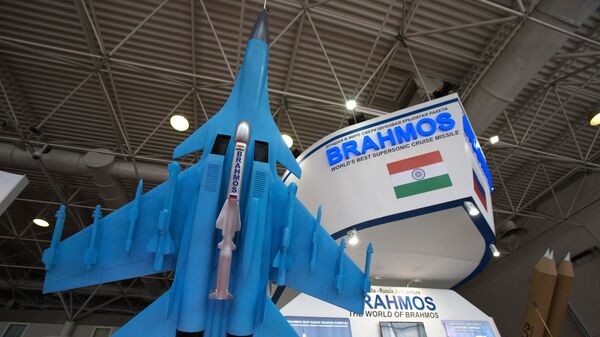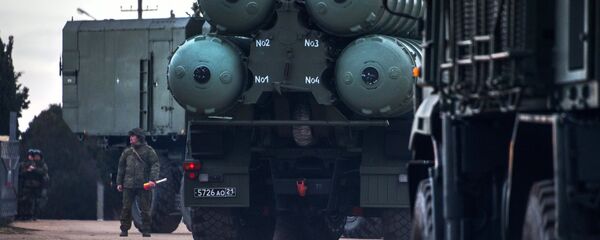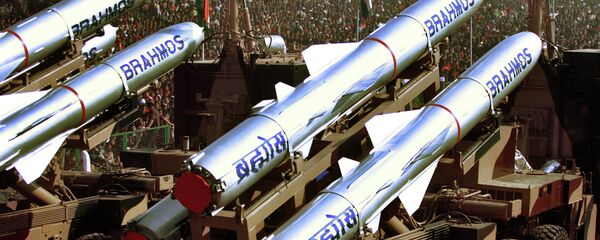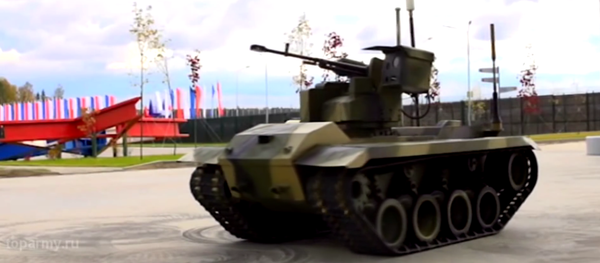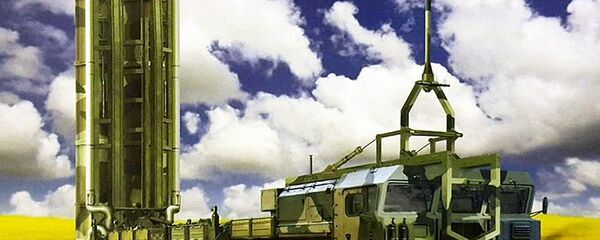Russian Equipment With an Indian Twist
Given cooperation going back all the way to the 1960s, India has emerged as Russia's most significant and trusted military client, accounting for about a third of all Russian arms exports, according to recent estimates by the Stockholm International Peace Research Institute. Rosoboronexport, the state intermediary agency for Russian arms sales abroad, has calculated that India has purchased over $65 billion in Soviet and Russian armaments since the 1960s, with Moscow accounting for well over half of the Delhi's weapons purchases.
As a long-term, dependable partner, India's purchases have entitled them to very high level cooperation, including the licensed production of some very modern Russian military hardware. The scale of that cooperation is impressive, according to Stanavov. "Hindustan Aeronautics Limited alone has produced over 200 Sukhoi Su-30MKI heavy fighter planes since the year 2000," the observer wrote. "And we're not talking about semi-knocked down assembly, but the full production cycle. Russia provides only the raw materials, including aviation-grade aluminum and titanium stamping."

"The Su-30MKI is a very ambitious program," the analyst stressed. "In total, HAL Corporation plants have produced some 222 of the fighters. By modern standards this is simply a tremendous amount." In fact, the expert said, the only thing the Indian aircraft industry has yet to master is making the Al-31FP turbojet engines for its Sukhois, evidenced by Delhi's purchases of Russian-made engines from time to time.
According to Makienko, the level of trust in Russian-Indian military technical cooperation is at an "extremely high" level, with the Indian side freely granted all the necessary technical documentation on Russian weapons systems they buy, which Delhi finds valuable under its Make in India' import substitution initiative.

Alongside the Sukhoi fighters, another major modern Russian weapon enjoying large scale local production is the T-90S tank, with the two countries recently implementing an agreement allowing Indian arms makers to produce the Mango armor-piercing shells for the main battle tank's 125 mm gun.
Other production license agreements are in the pipeline, including a joint production venture on the Ka-226 helicopter, and ammunition for the BM-30 Smerch heavy multiple rocket launcher system.
Very significant, according to Makienko, is the fact that Delhi has proven very trustworthy when it comes to copying or trying to organize the unlicensed production of Russian systems. "They do everything in accordance with the agreement." This is preferable to the Chinese approach, the expert noted, where "whatever you give them, you can be sure that they will disassemble it and try to make a copy."
China's 90s Bonanza
According to Stanavov, during the malaise days of Russia's early post-Soviet history, China was quick to move in to seize opportunities on some very advanced weapons systems. "In 1996, Beijing bought a license for the manufacture of some two hundred Su-27 fighter planes. Shenyang Aviation Company received the blueprints and technological kits from Moscow, including engines, on-board electronics and weapons systems."
What resulted was the manufacture of about 100 aircraft under the J-11 designation, which the People's Liberation Army Air Force soon said were obsolete. "Later," Stansov noted, "the technology proved useful in the creation of a 'homegrown' aircraft, the J-11B, with Chinese engines and avionics…This is a favorite tactic of the Middle Kingdom – to buy a small batch of imported military equipment, study it and quickly establish its own, unlicensed production."

China took advantage of the military garage sale taking place elsewhere in Eastern Europe following the Soviet collapse as well, perhaps most famously with the Liaoning aircraft carrier, built on the basis of the unfinished Soviet Varyag carrier, which Beijing purchased from Ukraine in the late 1990s along with eight trucks' worth of technical documentation.
Using the unfinished hull, the blueprints and their own upgrades, Beijing was able to finish and commission the Liaoning, in 2012, followed up with the more advanced Type 001A in 2017, which is currently in the process of being fitted out.

Small Arms Simplicity
With small arms, things are easier, Stansov noted.
"There are no localization levels. As a rule, everything is just made from scratch. The importer pays the license fee, receives the blueprints and technical documentations, builds a factory and, with the exporter's support, begins cranking out guns."
But design and testing are another matter, the observer said. Recently, Vietnam purchased plans for the OSV-96 sniper rifle, a 12.7 mm caliber design with an effective range of up to two kilometers and powerful armor-piercing ammunition capable of penetrating light armor, radar antennas, naval mines and more. Production was established at the Z111 small arms factory for the Vietnamese People's Army.
"The Vietnamese cannot design such a rifle. That is the prerogative of countries that have their own weapons school. Russia, of course, is one of those countries," Degryarev noted.
Soft Power
The above issues and problems aside, Stansov noted that in general, the sale of licenses nevertheless remains advantageous to the exporter, not only economically, but politically as well.
"Establishing production in third countries allows the original exporter to influence the arms markets in the region, creates the basis for deepening military-technical cooperation and the strengthening of mutual trust," the journalist concluded.
